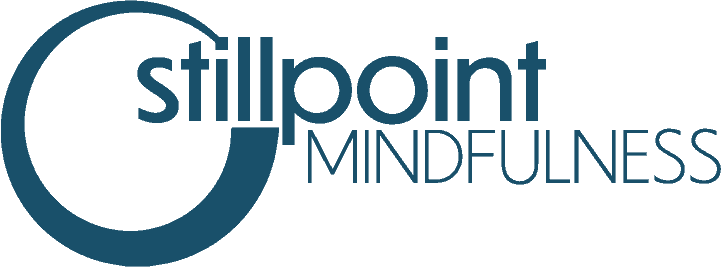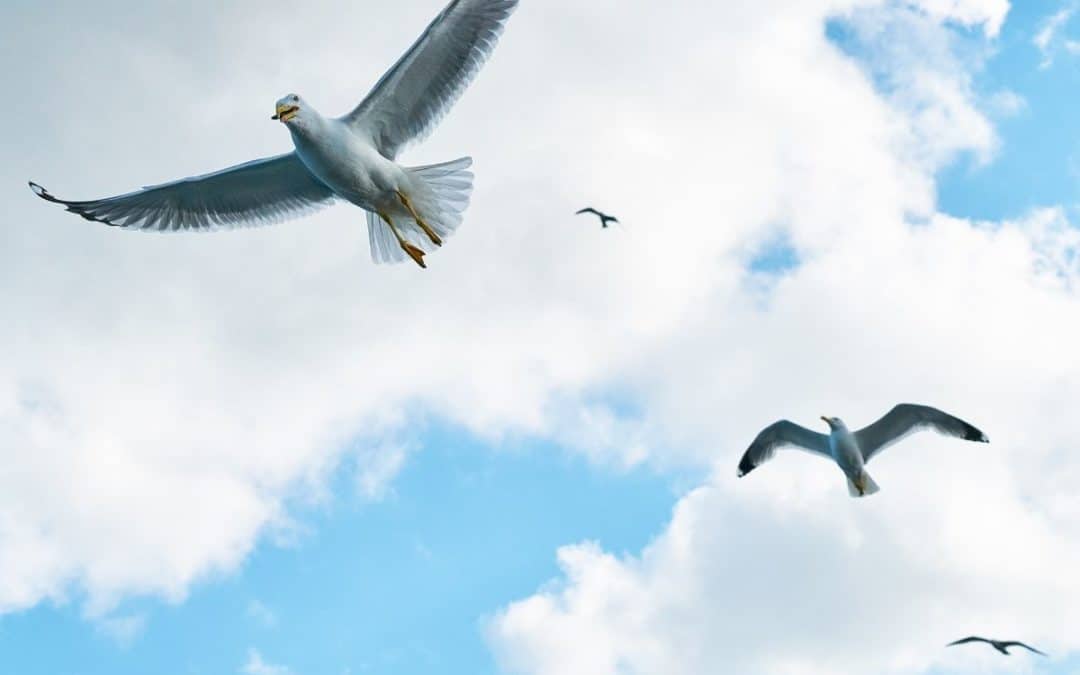Last summer, almost by accident, I flew on a trapeze. I hadn’t intended to. It wasn’t some life-long dream I’d been longing to fulfill. But for months I’d been struggling with the discomfort of change, and my husband, in his intuitive way, had likened my situation to a being on a trapeze. “It’s like needing to let go of one bar to reach for another–really scary, but all part of the movement forward.” And then, in late June, the opportunity arose–to bring into my body the felt sense of presence, courage, and commitment required to “fly through the air”–and I took it.
Practicing mindfulness over many years has taught me the importance of embodiment. We can’t just think about being mindful–“Hey, great idea, just be more present! Awake! Responsive! Kind!” Given all that pulls our attention out into the future (planning, scheming, fantasizing) and back into the past (regretting, re-playing, ruminating on ‘woulda, shoulda, coulda’s’), the art of mindfulness lies in implementation. Moment to moment, we practice dropping in right here, right now, opening to our lives as we find them. Paradoxically, embodiment is the gentle practice of coming home to where we already live, and learning to accept, as a starting point, that things are as we find them.
Lately, however, ’embodied acceptance’ had seemed a far stretch. I was in the midst of major life transitions. On a personal level, with one child already out of and the other in college, I was no longer a full-on parent. Professionally, I was at the brink of letting go of my long-time counseling practice, and along with it the many individuals with whom I have felt so privileged to work. I was reaching to engage more fully at the intersection of mindfulness and trauma, yet, fear of the unknown, and vulnerability that resurfaced from my own experience of trauma was keeping me stuck.
And then, while at the Omega Center for a training in Trauma-Sensitive Mindfulness, I walked by a large open field with a rig set up for classes in the art of trapeze. It drew me, kindling a hope that the embodied feel of the swing’s momentum, the movement from one bar to the next, might catalyze movement in other areas that felt fogged by indecision and fear. I signed up.
It turns out that a 2-hour course in trapeze-flying is in fact advanced practice in the art of mindfulness. It serves as a prism that exaggerates and amplifies challenges that come up in the rest of life, and therefore also in mindfulness practice: intensely reactive thoughts, judgements, emotions, body sensations. Working with them in this mid-air ‘classroom’ reinforced the lessons that mindfulness teaches on the ground. Below are my ‘field notes’ from this exploration of freedom in flight:
Lesson #1: Don’t Fight Change
We know conceptually that everything is in motion all the time. Yet, we regularly cling to the illusion that things stay the same–especially the beliefs, people, policies, identities we hold most most dear. Resistance to change–almost surprised that it’s happening–is one of the most reliable forms of suffering. On the trapeze, from the moment I left the ground, climbed up to take hold of the swing and followed the instructor’s call of “HUP!” to jump, there was only movement, flow, nothing static.
How to be in relationship to it? We have two main choices for trapeze-learning, and life- give yourself over to the movement of change, or resist it, hold back, shut down. Though there are times to hold back, to close and self-protect, on the trapeze it makes everything harder. It pits us against the physics of the swing, and instead of going with gravity and momentum, we struggle against it. And in direct proportion to the increase in struggle is the diminishment of delight.
Lesson #2: Thoughts are not Facts
When climbing a ladder 25 feet off the ground to a platform the size of a pancake, to then leaping off it holding only a bar, to then swinging through the air first from my hands and then from my knees, upside-down, to eventually reaching out to the ‘catcher’ and letting go of the first bar to take hold of his wrists and swing again… thoughts of impending doom (“Don’t do it!! You’ll die!! This is insanity!!!”) can sound enormously trustworthy!
And yet. With multiple safety systems in place to prevent harm–a safety belt at the waist attached to wires held by a professional on the ground, and under that a literal safety net to catch us if we should fall–danger is an illusion, albeit a highly convincing one.
The trapeze prompts us to reflect: how often in the rest of life do our thoughts scream their warnings and mobilize our reactivity to something that is, actually, already ok? How often are there not one, but perhaps multiple ‘safety nets’ of one kind or another in place to catch us if we fall, if we ‘fail’? How often do we stay on the ground, refusing to pursue what calls to our hearts because we believe the thoughts that tell us the risks are too great, the danger too extreme?
High above ground, with my thoughts clamoring their concerns, I turned attention to the body–“oh, my pulse is racing, adrenaline is flowing, muscles are tensing”–and to naming the emotions that fueled the thoughts–“holy cow, there’s a lot of fear here now!” The tight grip began to loosen, opening just enough space to observe the thoughts rather than react to them as if they’re ‘true’. This space is the difference between acknowledging fear and being ruled by it.
Lesson #3: Stay in the Moment
Thoughts will take us away, propelling us into the future, or the past. The trick is to stay here, in the rhythm of alternating legs and arms climbing the ladder’s rungs, in grasping the bar in clammy hands, in leaning out and out, the assistant holding me by the back of the belt, in bending the knees, in the little hop off the platform and into the air. Staying allows for receiving the support that’s available, allowing momentum itself to help knees up and over the bar, letting go of hands and leaning back, away, no visual reference anymore, upside-down, just in the swing, and of it. The body is the only intelligent species present–the mind will only muck things up, so don’t listen to thoughts! Listen, yes, to the instructor calling, “knees up!”, “Hands off”, and then “Release!” to drop and be caught by the net. But here is where the action is, and leaving to flee into the future or past brings the immediate feedback of missing the mark.
Lesson #4: Breathe
The breath is a friend–it’s here, in the body, in this moment. It can serve to steady awareness and emotions, grounding us even high in the air. It can be a place to wait, underneath thoughts that would spin us around, a refuge in the midst of not knowing what’s next. The breath is known. Embrace it as an ally in the corridors of change.
Lesson #5: Discomfort is Part of the Gig
There’s a saying in mindfulness circles: ‘Pain is inevitable, but suffering is optional.’ As hip flexors strain, and hamstrings seize, discomfort can seem to prove that the experiment is failing, that I’m failing. Without doing harm, can we learn to tolerate the discomfort and pain that’s part of the fabric of growth?
The relevant equation is elegant in it’s simplicity: Pain + Resistance = Suffering. It all hinges on: What’s your intention? If it’s to stretch, to grow, to explore at the edge of what’s known, then, kindly, and with great care, don’t sweat the small stuff.
Lesson #6: Reach!
To expand from #3, connecting in the moment depends on the willingness to actively engage. It’s not enough to jump from the platform, or hang from the bar. Dead weight is a brake on momentum. Our challenge is to meet the trapeze, and life, whole-heartedly. We reach not knowing the outcome, not certain of timing, strength, flexibility–all factors that impact how, and if, we make it to the next bar. We can’t control outcome, but we can choose to show up, to lean into the edge where learning unfolds. Swinging through space upside down, we commit again to lifting the chest, stretching out, seeking another’s arms for the ‘catch.’ Maybe, you reach as best you can and you’re caught, and maybe this time you’re not. The victory lies in choosing to reach, and reach again.
Lesson #7: Trust your Pit Crew
In the trapeze ‘classroom,’ as in the rest of life, you are not alone. Or, more accurately, you are and you aren’t. Yes, you alone will jump off the platform and into the air. You will either get your knees up and over the bar in time to make the reach or you won’t. But support is close at hand, holding the belt, calling instruction, managing the ropes to the net. Who and what make up your support crew? Teachers, friends, family, colleagues, the blue sky on a crisp morning, a puppy’s wagging gaze. Identify where they are in your life. Lean into them. Trust them to cheer you on, and break your fall. Not one of us can do this alone.
Lesson #8: Train
Jon Kabat-Zinn has said about daily mindfulness practice: “You want to weave your parachute day in and day out, so that when you jump out of the plane it just might hold you up.” Though physical training is relevant both to jumping out of planes and to trapeze-flying, Jon is referring to the mind/heart training required for showing up in midst of life’s challenges from what’s deepest and best in us, rather than what’s most reactive. Fear, doubt, reactive thoughts and judgements, bodily strain and discomfort–all of these are loud visitors on the trapeze, as they so often are in life. Bringing mindful, friendly awareness to them means they can be met, honored, worked with, making neither too much of them nor too little, but rather allowing them to be as they are. Uncomfortable? Yes. Unpleasant? Certainly. But not paralyzing. That, it turns out, is enough.
Now, in November, the momentum of that June day is still carrying me forward. I have released the counseling ‘bar’ that held me so well for so long, full of gratitude for the gifts it has offered, it’s teachings on beauty, pain, courage, the resilience of the human spirit. I continue to practice ‘reaching out’, with full engagement, and uncertainty regarding outcome. It is the practice of ‘beginning again.’
In an ever-changing world, we are, in fact, always beginning again. Sometimes it’s more obvious than others, and when it’s harder to see, we can forget how to embrace new conditions (aka, ‘change’) most wisely and with the least amount of struggle. When we do forget and lose touch with the lessons outlined above, we might steer ourselves kindly back to our cushion for mindfulness practice, or, alternatively, hope that a trapeze-flying rig lands in our path, as it did mine. Either way, practice helps us to remember our own deep capacity for meeting change–and the loss, fear, and discomfort that often accompany it–with clarity, self-compassion, and courage. As we navigate the changes currently at our doorstep, may we each continue to lift our chests, look to the next bar, and reach out–hands open, hearts wide.


Recent Comments